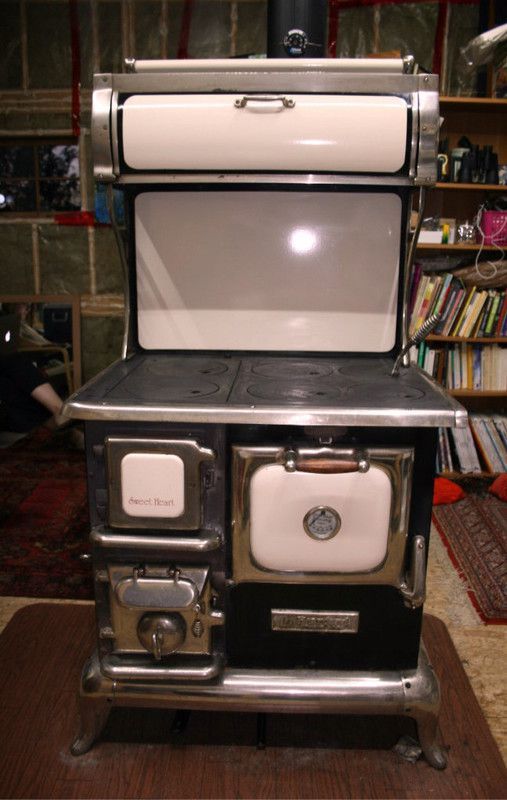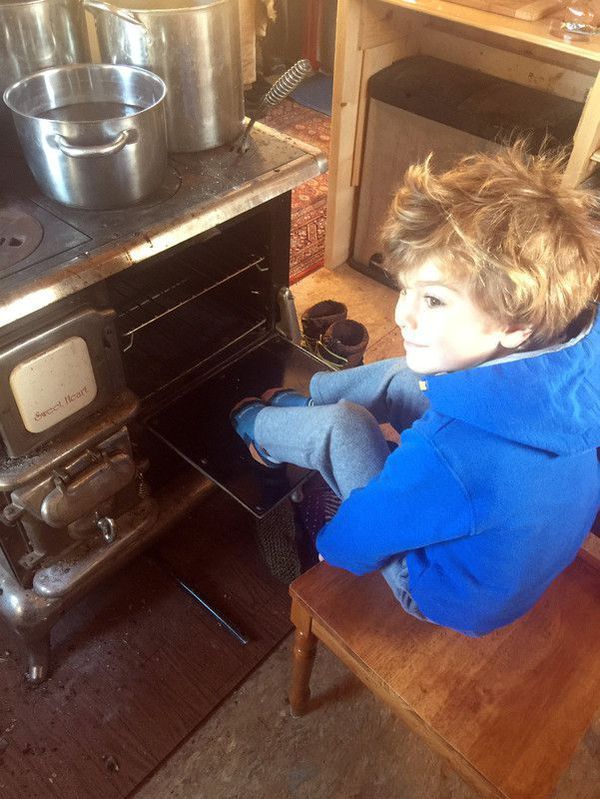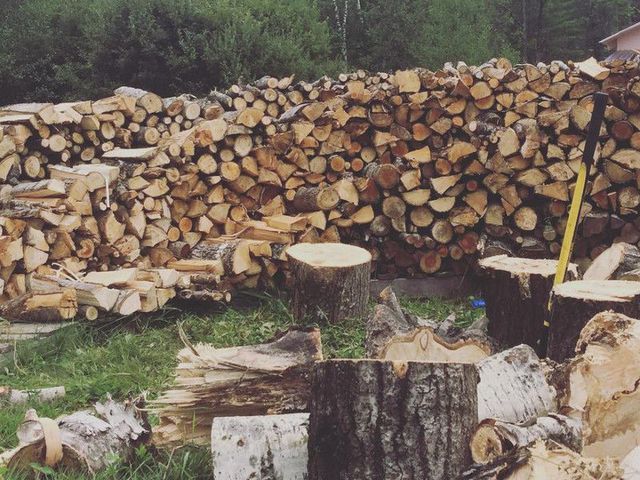Living without series: Part 5
When I tell people we live off-grid, the questions they ask usually start with ‘how do you live without (…)’. The first one being ‘How do you live without a fridge?’, which I answered here. How we lived without lights can be found here. How we live without running water is here. We also live in a tiny house, so Living Without Space is here. This is part of an ongoing series of Living Without.
On most Vermont winter days, the temperature fluctuates from cold to bitter cold. Before moving to our tiny off-grid house, I feared and simultaneously fantasized that life would be boiled down to survival: a life of harshness, where my strength would be tested on a daily basis. As I listen to the howling of the wind outside, I realize I am not surviving, I am finally living. I listen to the howl, the fire in the cookstove crackling, the hot water at the cusp of boiling singing on the cookstove, the soup simmering, and I feel content. The howling nowadays is calming and comforting, as it is heard from the comfort of our cozy home.
Our cookstove is a Heartland Sweetheart.

Two years before we even knew what we were going to build, we found this beautiful cookstove a neighbor was selling. We bought it, knowing it was ‘the one’ and we would one day use it. We restored it close to its original beauty, and it sat 2 years in our basement. Every day, we would dream about firing it. It started to become the centerpiece of our ideal: we would build a house that could accommodate it, but also embrace it. It has not only shaped the house design but also opened the possibility that we could achieve self-sufficiency. We placed the stove at the center of the house, by doing so we maximize its utility and its presence.
Friends are often curious how cooking on a cookstove compares to an electric/propane range. I too was apprehensive being an avid cook. A lot of recipes call for preheating the oven, then turning it down to a certain temperature, and finally bringing it back up for a certain amount of time. I thought that baking and cooking would be an impossible mission thus tainting my love of cooking. To tell you the truth, I’ve come to prefer cooking and baking on a woodfire. It is as I thought, quite different from the precise simplicity of turning a dial, but it is far from an overwhelming task.
Baking and cooking now requires more intent. The first thing we do when we wake up is to go outside and gather some kindling and small logs. We crumble some newspapers up, add the kindling, and the logs, and fire it up. We finally can put water on the stove for our morning coffee.
Throughout the day, I feed the fire to keep the house warm. As a result, there is always something simmering on the stove: the tea kettle to humidify the house, a soup for supper, or a pot of water to do dishes or take a shower. We also use the area around the stove to dry our clothes and shoes. The stove itself is a moving workspace, we are constantly moving things around to find the appropriate spot for what we are trying to heat, cook, or dry.
It truly is a multi-purpose stove: my son likes to heat his feet up after playing in the snow

The recipes and ingredients I use have slightly changed. Because the stove is always on, making stock or a coq-au-vin, things that take hours to simmer, doesn’t seem extravagant anymore. We discovered we love wild rice, something I would never buy before because of the time required to cook it. 50 minutes on the stove doesn’t seem like a waste of energy because we use wood. The wood is harvested, cut, and split by hand. It’s hard work, I am not going to say otherwise. But it is not unpleasant work.
As mentioned in a previous post, we harvest our wood sustainably from our forest. Even though we rely completely on wood to heat water, heat the house, heat our food, we only use 2 cords of wood a year (these past two winters in Vermont have been relatively mild, though). We split by hand. Sometimes we turn it into a competition to see who has the best method to split, always trying to improve our posture and techniques. Most of the time, we carry a conversation about our dreams for the homestead. Sometimes we have friends over, and while sipping on our pre-supper beer, someone will pick up the splitting maul and help out a bit.
I like hearing the sound a tough log makes when it finally starts giving in. I like smelling the various aromas logs release when they open up (my favorite comes from poplar trees which smell like olives). I love hearing my son giggle when I miss a hit. I love that I can involve him in this family event. We would not be able to enjoy these moments with our son using a gas log splitter, the machine being too powerful and noisy to allow for a safe environment for a child. These moments of hard work shared with friends and family are why I am content.
There is a saying that wood warms you three times; once when you cut it, once when you stack it, and once when you burn it (I could probably add twenty other occasions such as sweeping the chimney or bringing wood in.) The way wood fire radiates makes for a unique source of heat. It penetrates your body and soul, and makes our house a cozy little cocoon. We are cold in other places, even though the thermometer indicates a similar reading.
Wood heat stays with you, you can even take some with you when you go out on a blisteringly cold winter day of Vermont.
